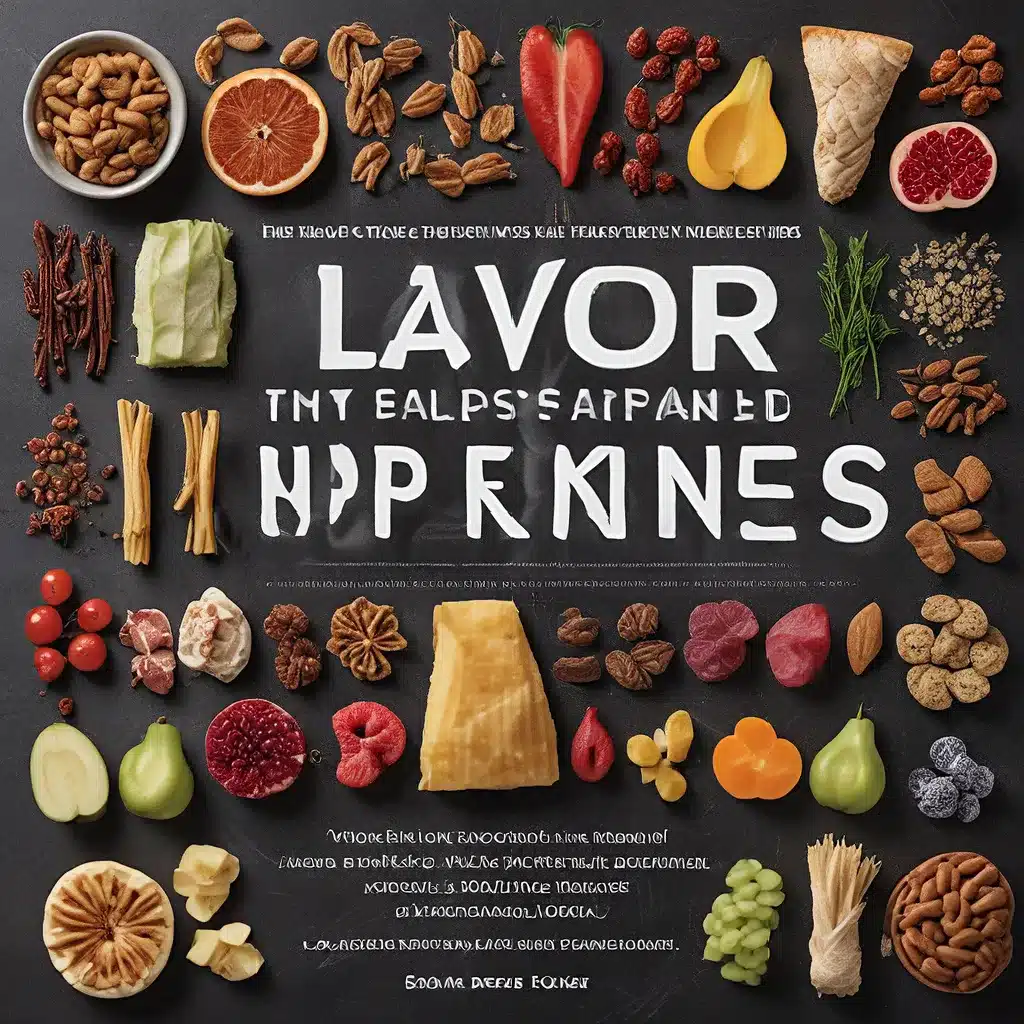
As a self-proclaimed foodie, I’ve always been fascinated by the ever-evolving landscape of culinary innovation. From molecular gastronomy to lab-grown meat, the possibilities for transforming our palates seem to expand exponentially with each passing year. But what’s really driving these revolutionary changes, and how will they impact the way we experience food in the decades to come?
In my quest to uncover the cutting edge of flavor science, I’ve had the privilege of speaking with some of the industry’s top innovators and thought leaders. And let me tell you, the future of taste is nothing short of mind-blowing.
The Dawn of a Sensory Revolution
One of the key forces shaping the future of flavor is the growing emphasis on sensory science. Companies like Cargill are investing heavily in understanding the complex interplay between our senses of taste, smell, and even touch when it comes to how we perceive and enjoy food.
“It’s not just about finding the right combination of ingredients,” explains Neşe Tülay, Cargill’s resident sensory expert. “We’re exploring new ways to manipulate the physical and chemical properties of foods to create entirely novel sensory experiences.”
Tülay and her team, for instance, are experimenting with textures that melt on the tongue or release bursts of flavor in unexpected ways. By understanding the neurological triggers that make certain flavor profiles more appealing, they’re able to engineer products that are not just delicious, but downright captivating.
Embracing Bioenergy and Sustainable Innovations
But flavor innovation isn’t just about satisfying our taste buds – it’s also about sustainability and environmental impact. Companies are increasingly turning to alternative energy sources and waste-reduction strategies to power the future of food production.
“Bioenergy is a game-changer,” says Cargill’s Chief Technology Officer. “By converting agricultural waste into advanced biofuels, we can help decarbonize the industry and create a more circular, eco-friendly model for food manufacturing.”
Similarly, Cargill has made headlines for its efforts to eliminate industrially produced trans fats from its entire edible oils portfolio – a move that aligns with the WHO’s recommendations for healthier, more sustainable food options.
These types of innovations aren’t just good for the planet – they’re also resonating with increasingly health-conscious consumers who want to feel good about the foods they’re enjoying.
Reimagining Protein and the Plant-Based Boom
Of course, no discussion of flavor innovation would be complete without addressing the seismic shift towards plant-based and alternative protein sources. From mycoprotein to cultivated meat, the race is on to develop sustainable, guilt-free protein options that can satisfy our cravings without the environmental baggage.
“The alternative protein market is evolving at a breakneck pace,” notes the Cargill executive. “We’re seeing a surge of innovation in everything from novel plant-based formulations to cutting-edge fermentation technologies. The possibilities are truly endless.”
And it’s not just about replicating the taste and texture of traditional meat – companies are also exploring ways to create entirely new eating experiences. Imagine a burger that “bleeds” like the real thing, or a chicken nugget with a crispy, satisfying bite. The future of protein is poised to upend our expectations in the most delicious ways.
Harnessing the Power of Collaboration
One of the most striking aspects of the flavor innovation landscape is the collaborative spirit driving progress. Rather than hoarding their breakthroughs, industry leaders are actively seeking out partnerships and cross-pollination of ideas.
“Innovation begins with innovators,” as Cargill puts it. “By bringing together diverse perspectives and expertise, we can tackle the biggest challenges facing the food and agriculture industries.”
Take the company’s work with Kerry Group, for example. The two organizations have teamed up to explore the frontiers of open innovation, sharing resources and insights to drive breakthroughs in sustainable nutrition.
“The spirit of collaboration is really palpable,” says one participant. “You can just feel the energy and excitement of everyone working together towards a common goal.”
This willingness to embrace partnerships and cross-disciplinary thinking is likely to be a defining characteristic of the flavor innovation landscape in the years to come. After all, as the old saying goes, “two (or more) heads are better than one.”
Honoring Tradition, Embracing the Future
Of course, even as we charge headlong into the future of taste, it’s important to remember the rich history and cultural traditions that have shaped our culinary landscape. Companies like ADM are working to honor heritage while also pushing the boundaries of what’s possible.
“It’s not about abandoning the past, but rather building upon it,” explains the ADM executive. “We want to celebrate the time-honored techniques and flavors that have nourished us for generations, while also exploring innovative ways to reinvent and reinvigorate the experience.”
This delicate balance – between respecting tradition and embracing the unknown – is perhaps the greatest challenge (and opportunity) facing the flavor innovators of today. But if the recent advancements are any indication, I have a feeling the future of taste is in very capable hands.
So, whether you’re a die-hard foodie or just someone who enjoys a really good meal, keep your eyes peeled for the breathtaking flavor innovations that are sure to grace our plates in the years to come. The culinary revolution is upon us, and it’s going to be delicious.

